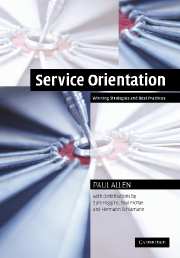Foreword
Published online by Cambridge University Press: 31 July 2009
Summary
In the broader scheme of things our use of computer systems is still in its infancy. In just fifty years we have made amazing progress, to the point that computer systems are essential to the smooth running of home and business. Yet any systematic or casual measurement of user satisfaction with enterprise systems will inevitably return unsatisfactory ratings. The problems are legion but, with monotonous regularity, surveys report that users believe that total costs of ownership are too high and systems are insufficiently responsive to constantly changing circumstances.
The root problem is that insufficient attention has been paid to the fundamental structure of software systems. In other engineering disciplines such as automotive, construction, or electronics, there is unambiguous understanding between the user requirements and the delivered product, such that the various stakeholders can engage with the architect in a highly meaningful manner. For example, the architect and designer of the automobile, bridge or silicon chip has well-understood responsibilities to optimize the design and economics by using standard patterns and components which deliver a product that has a well-understood life cycle from production engineering through to retirement.
In contrast, the typical software system has no coherent structural and economic model that governs its life cycle. Rather, the approach to acquiring software systems is usually a mixture of blind faith and optimism.
- Type
- Chapter
- Information
- Service OrientationWinning Strategies and Best Practices, pp. xi - xivPublisher: Cambridge University PressPrint publication year: 2006

